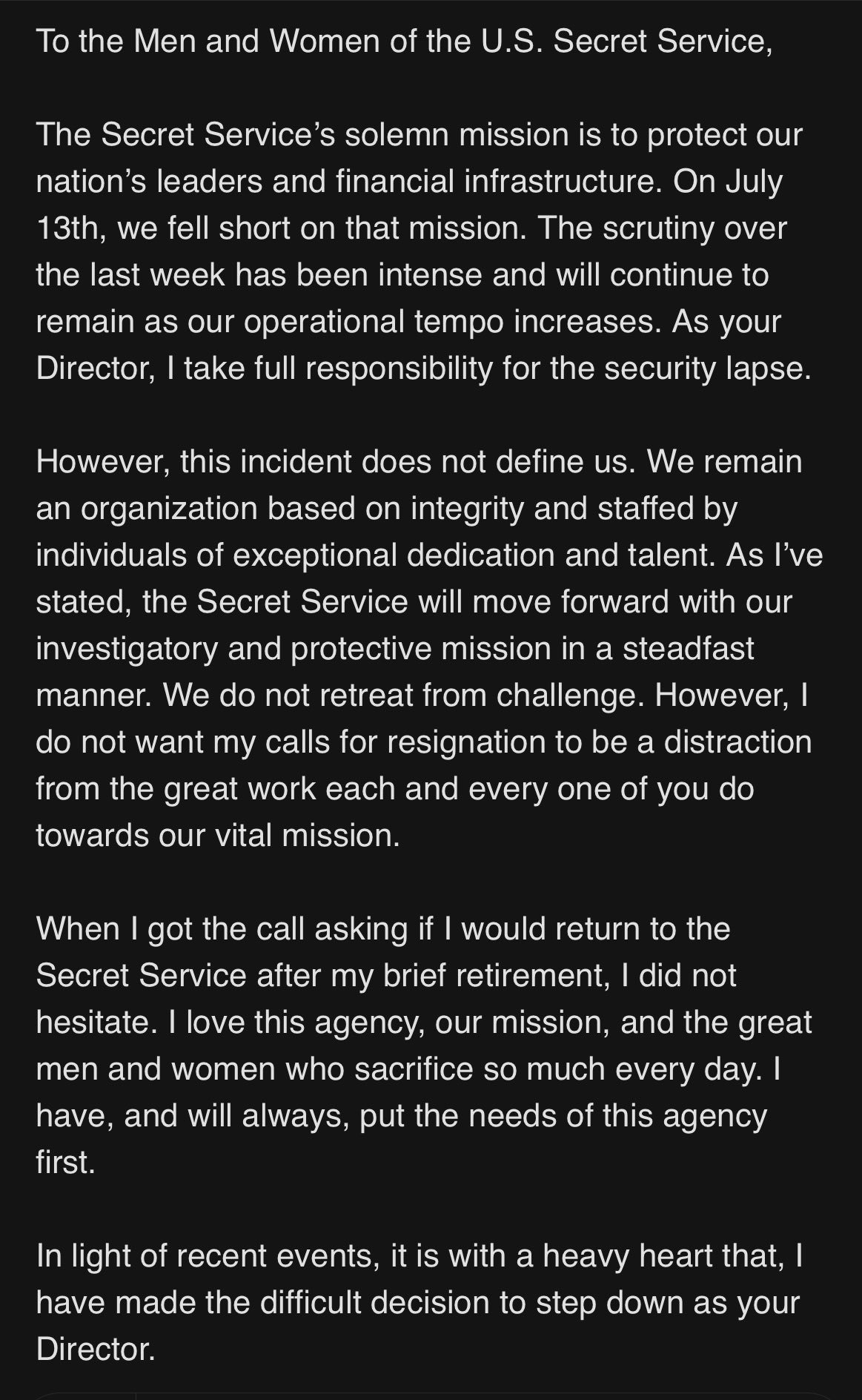Resignation Statements
/Secret Service Director Kimberly Cheatle resigned after the assassination attempt of former President Trump, and President Biden decided not to run again for office. Students can compare both statements.
Despite the dramatic, marching-band resignations students might see on TikTok, job resignation letters should focus on goodwill. What’s different about these political messages is that the reasons are provided—sometimes.
Cheatle ended her term in a message to staff that became public. After a grueling hearing with lawmakers about the agency’s failure to protect former President Trump from a shooter, she may have had little choice in the decision. In her email, she wrote, “As your Director, I take full responsibility for the security lapse.” Her main objectives are to reassure staff and boost their confidence. She does this by praising their work and encouraging them to stay focused. Her resignation decision—the main point—is at the end instead of up front, as we teach for messages, including bad news, particularly when it’s obvious or expected.
President Biden’s (some would say long-awaited) decision to decline the Democratic party’s nomination came on X. Unlike Cheatle, he doesn’t give a reason. He makes no mention of the criticism about his debate performance and concerns about his mental and physical health, which is to be expected. He simply says, “I have decided not to accept the nomination and to focus all my energies on my duties as President for the remainder of my term.” More significantly, he endorses Vice President Harris and includes a photo of them walking together, impeding other candidates’ chances of nomination.
President Biden’s comment about Cheatle’s resignation is notable: “As a leader, it takes honor, courage and incredible integrity to take full responsibility for an organization tasked with one of the most challenging jobs in public service.” Modifier issue aside, he compliments the character dimensions many hoped he would have demonstrated since the debate debacle.
I’m categorizing these examples under “bad-news message,” although many see both as good news, which is often the case.



